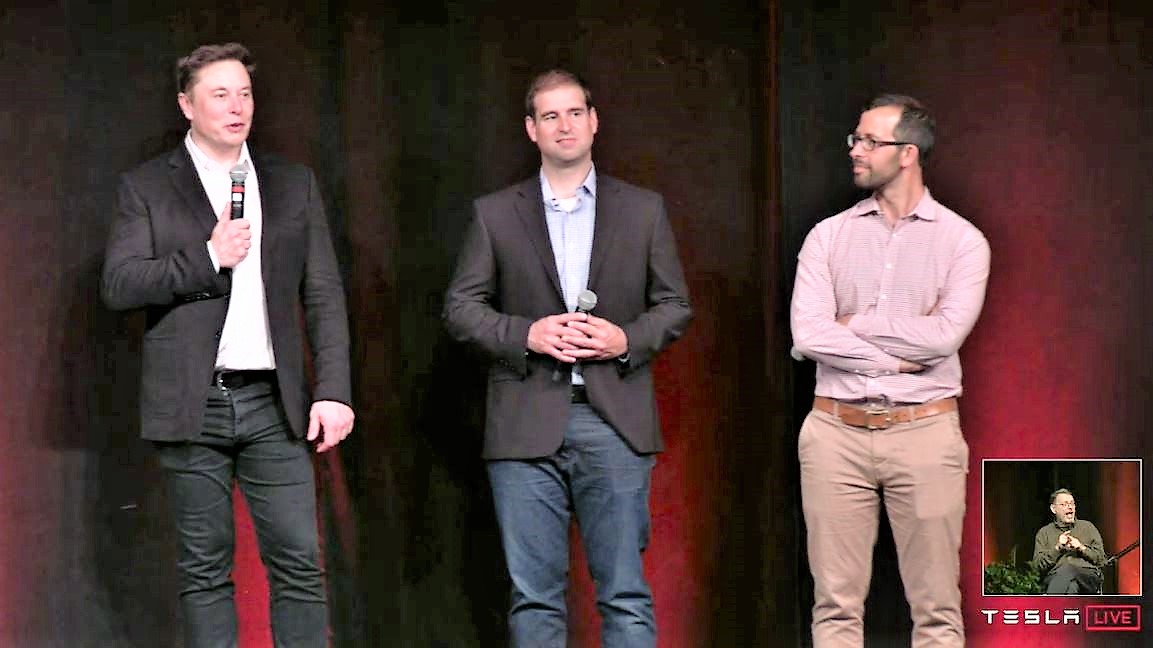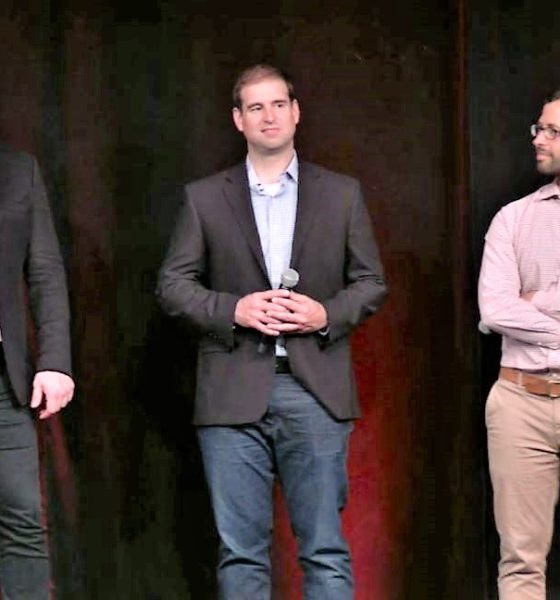

News
Tesla to host Investor Battery and Drivetrain Day in Q3 2019
Tesla will host an Investor Battery and Drivetrain Day in August or September this year, according to CEO Elon Musk during the 2019 Annual Shareholder Meeting. The announcement came during Musk’s answers to questions submitted and voted on prior to the meeting, specifically while responding to an inquiry about which aspects of battery production would be integrated with Maxwell Technologies.
“We think this is really quite strategic, but we’ll leave the details of this to a kind of a battery and powertrain investor day…[there are] some very important technologies there that will have a big effect on the cost and scaling of cell production, both reducing the cost and reducing capital required to scale production,” Musk replied.
Tesla confirmed last month that the company had completed the acquisition of Maxwell Technologies, Inc., a California-based company that specializes in ultracapacitors and batteries. The takeover was funded by transferring stocks worth over $235 million dollars and the move is poised to usher in new improvements in Tesla’s battery technology. Ultracapacitors are predicted to eventually be an alternative to today’s batteries, particularly as they have the potential to be safer and more reliable.

Overall, any battery-related answers during the livestreamed Shareholder Meeting were limited in details and deferred to the upcoming investor event.
“We have to scale battery production and match that to vehicle demand,” Musk commented in response to a question about Tesla’s battery needs surrounding the Model Y, Semi, Tesla Truck, and Roadster 2.0. “We don’t want to let the cat out of the bag too much, you know…it’s still in the bag,” he joked.
The Investor Battery and Powertrain Day event is expected to be similar to the Investor Autonomy Day held in April which provided in-depth information surrounding Tesla’s work on its Full Self-Driving computer and progress towards its autonomous driving goals. While physical attendance was limited, a public livestream was made available. The event lasted over three hours and was full of highly technical details about the hardware and software developed in-house for Tesla’s vehicles.
The Shareholder Meeting revealed a few other details about the company’s progress on other projects in the works as well.
Tesla’s Blade Runner-inspired pickup truck will be revealed this summer, according to Musk. The CEO also recently announced that its starting price would be under $50,000 and would be as more capable than a Ford F-150 in terms of functionality and better than a Porsche 911 in terms of sports car attributes. “It’s going to be a truck that’s more capable than other trucks,” Musk explained previously. Those goals were reiterated during the meeting without providing further details.
The location of Gigafactory Europe is also still in the works. In the Shareholder presentation, a photo of empty, dirt and grass-only fields was humorously presented as an updated view of the project. “As you can see, we’ve made great progress here,” Musk joked. The caption under the photo read “Active search for a European location”, and it was clarified that the image was not actually representative of a real location for the Gigafactory.
A decision on the final place for Gigafactory Europe will hopefully be decided this year, according to Musk, with the overall goal being to have a Gigafactory on every continent.

News
Tesla FSD fleet is nearing 7 billion total miles, including 2.5 billion city miles
As can be seen on Tesla’s official FSD webpage, vehicles equipped with the system have now navigated over 6.99 billion miles.

Tesla’s Full Self-Driving (Supervised) fleet is closing in on almost 7 billion total miles driven, as per data posted by the company on its official FSD webpage.
These figures hint at the massive scale of data fueling Tesla’s rapid FSD improvements, which have been quite notable as of late.
FSD mileage milestones
As can be seen on Tesla’s official FSD webpage, vehicles equipped with the system have now navigated over 6.99 billion miles. Tesla owner and avid FSD tester Whole Mars Catalog also shared a screenshot indicating that from the nearly 7 billion miles traveled by the FSD fleet, more than 2.5 billion miles were driven inside cities.
City miles are particularly valuable for complex urban scenarios like unprotected turns, pedestrian interactions, and traffic lights. This is also the difference-maker for FSD, as only complex solutions, such as Waymo’s self-driving taxis, operate similarly on inner-city streets. And even then, incidents such as the San Francisco blackouts have proven challenging for sensor-rich vehicles like Waymos.
Tesla’s data edge
Tesla has a number of advantages in the autonomous vehicle sector, one of which is the size of its fleet and the number of vehicles training FSD on real-world roads. Tesla’s nearly 7 billion FSD miles then allow the company to roll out updates that make its vehicles behave like they are being driven by experienced drivers, even if they are operating on their own.
So notable are Tesla’s improvements to FSD that NVIDIA Director of Robotics Jim Fan, after experiencing FSD v14, noted that the system is the first AI that passes what he described as a “Physical Turing Test.”
“Despite knowing exactly how robot learning works, I still find it magical watching the steering wheel turn by itself. First it feels surreal, next it becomes routine. Then, like the smartphone, taking it away actively hurts. This is how humanity gets rewired and glued to god-like technologies,” Fan wrote in a post on X.
News
Tesla starts showing how FSD will change lives in Europe
Local officials tested the system on narrow country roads and were impressed by FSD’s smooth, human-like driving, with some calling the service a game-changer for everyday life in areas that are far from urban centers.

Tesla has launched Europe’s first public shuttle service using Full Self-Driving (Supervised) in the rural Eifelkreis Bitburg-Prüm region of Germany, demonstrating how the technology can restore independence and mobility for people who struggle with limited transport options.
Local officials tested the system on narrow country roads and were impressed by FSD’s smooth, human-like driving, with some calling the service a game-changer for everyday life in areas that are far from urban centers.
Officials see real impact on rural residents
Arzfeld Mayor Johannes Kuhl and District Administrator Andreas Kruppert personally tested the Tesla shuttle service. This allowed them to see just how well FSD navigated winding lanes and rural roads confidently. Kruppert said, “Autonomous driving sounds like science fiction to many, but we simply see here that it works totally well in rural regions too.” Kuhl, for his part, also noted that FSD “feels like a very experienced driver.”
The pilot complements the area’s “Citizen Bus” program, which provides on-demand rides for elderly residents who can no longer drive themselves. Tesla Europe shared a video of a demonstration of the service, highlighting how FSD gives people their freedom back, even in places where public transport is not as prevalent.
What the Ministry for Economic Affairs and Transport says
Rhineland-Palatinate’s Minister Daniela Schmitt supported the project, praising the collaboration that made this “first of its kind in Europe” possible. As per the ministry, the rural rollout for the service shows FSD’s potential beyond major cities, and it delivers tangible benefits like grocery runs, doctor visits, and social connections for isolated residents.
“Reliable and flexible mobility is especially vital in rural areas. With the launch of a shuttle service using self-driving vehicles (FSD supervised) by Tesla in the Eifelkreis Bitburg-Prüm, an innovative pilot project is now getting underway that complements local community bus services. It is the first project of its kind in Europe.
“The result is a real gain for rural mobility: greater accessibility, more flexibility and tangible benefits for everyday life. A strong signal for innovation, cooperation and future-oriented mobility beyond urban centers,” the ministry wrote in a LinkedIn post.
News
Tesla China quietly posts Robotaxi-related job listing
Tesla China is currently seeking a Low Voltage Electrical Engineer to work on circuit board design for the company’s autonomous vehicles.

Tesla has posted a new job listing in Shanghai explicitly tied to its Robotaxi program, fueling speculation that the company is preparing to launch its dedicated autonomous ride-hailing service in China.
As noted in the listing, Tesla China is currently seeking a Low Voltage Electrical Engineer to work on circuit board design for the company’s autonomous vehicles.
Robotaxi-specific role
The listing, which was shared on social media platform X by industry watcher @tslaming, suggested that Tesla China is looking to fill the role urgently. The job listing itself specifically mentions that the person hired for the role will be working on the Low Voltage Hardware team, which would design the circuit boards that would serve as the nervous system of the Robotaxi.
Key tasks for the role, as indicated in the job listing, include collaboration with PCB layout, firmware, mechanical, program management, and validation teams, among other responsibilities. The role is based in Shanghai.
China Robotaxi launch
China represents a massive potential market for robotaxis, with its dense urban centers and supportive policies in select cities. Tesla has limited permission to roll out FSD in the country, though despite this, its vehicles have been hailed as among the best in the market when it comes to autonomous features. So far, at least, it appears that China supports Tesla’s FSD and Robotaxi rollout.
This was hinted at in November, when Tesla brought the Cybercab to the 8th China International Import Expo (CIIE) in Shanghai, marking the first time that the autonomous two-seater was brought to the Asia-Pacific region. The vehicle, despite not having a release date in China, received a significant amount of interest among the event’s attendees.








